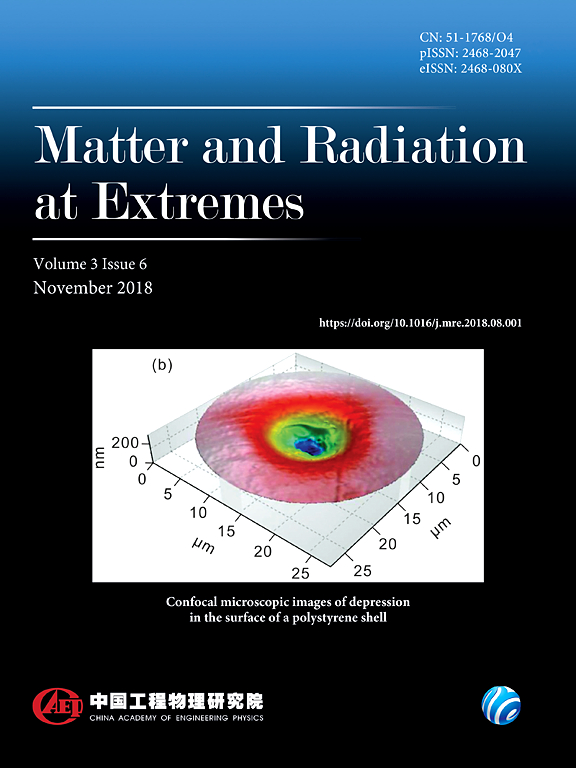Diagnosis of ultrafast ultraintense laser pulse characteristics by machine-learning-assisted electron spin
IF 4.7
1区 物理与天体物理
Q1 PHYSICS, MULTIDISCIPLINARY
引用次数: 1
Abstract
The rapid development of ultrafast ultraintense laser technology continues to create opportunities for studying strong-field physics under extreme conditions. However, accurate determination of the spatial and temporal characteristics of a laser pulse is still a great challenge, especially when laser powers higher than hundreds of terawatts are involved. In this paper, by utilizing the radiative spin-flip effect, we find that the spin depolarization of an electron beam can be employed to diagnose characteristics of ultrafast ultraintense lasers with peak intensities around 1020–1022 W/cm2. With three shots, our machine-learning-assisted model can predict, simultaneously, the pulse duration, peak intensity, and focal radius of a focused Gaussian ultrafast ultraintense laser (in principle, the profile can be arbitrary) with relative errors of 0.1%–10%. The underlying physics and an alternative diagnosis method (without the assistance of machine learning) are revealed by the asymptotic approximation of the final spin degree of polarization. Our proposed scheme exhibits robustness and detection accuracy with respect to fluctuations in the electron beam parameters. Accurate measurements of ultrafast ultraintense laser parameters will lead to much higher precision in, for example, laser nuclear physics investigations and laboratory astrophysics studies. Robust machine learning techniques may also find applications in more general strong-field physics scenarios.利用机器学习辅助电子自旋诊断超快超强激光脉冲特性
超快超强激光技术的快速发展为研究极端条件下的强场物理提供了机会。然而,准确确定激光脉冲的时空特性仍然是一个巨大的挑战,特别是当涉及到超过数百太瓦的激光功率时。本文利用辐射自旋翻转效应,发现电子束的自旋退极化可以用来诊断峰值强度在1020-1022 W/cm2左右的超快超强激光器的特性。通过三次射击,我们的机器学习辅助模型可以同时预测聚焦高斯超快超强激光的脉冲持续时间、峰值强度和焦半径(原则上,轮廓可以是任意的),相对误差为0.1%-10%。基础物理和替代诊断方法(没有机器学习的帮助)揭示了最终自旋极化度的渐近逼近。我们提出的方案对电子束参数的波动具有鲁棒性和检测精度。对超快超强激光参数的精确测量将导致更高的精度,例如激光核物理研究和实验室天体物理研究。强大的机器学习技术也可以在更一般的强场物理场景中找到应用。
本文章由计算机程序翻译,如有差异,请以英文原文为准。
求助全文
约1分钟内获得全文
求助全文
来源期刊

Matter and Radiation at Extremes
Physics and Astronomy-Atomic and Molecular Physics, and Optics
CiteScore
8.60
自引率
9.80%
发文量
160
审稿时长
15 weeks
期刊介绍:
Matter and Radiation at Extremes (MRE), is committed to the publication of original and impactful research and review papers that address extreme states of matter and radiation, and the associated science and technology that are employed to produce and diagnose these conditions in the laboratory. Drivers, targets and diagnostics are included along with related numerical simulation and computational methods. It aims to provide a peer-reviewed platform for the international physics community and promote worldwide dissemination of the latest and impactful research in related fields.
 求助内容:
求助内容: 应助结果提醒方式:
应助结果提醒方式:


